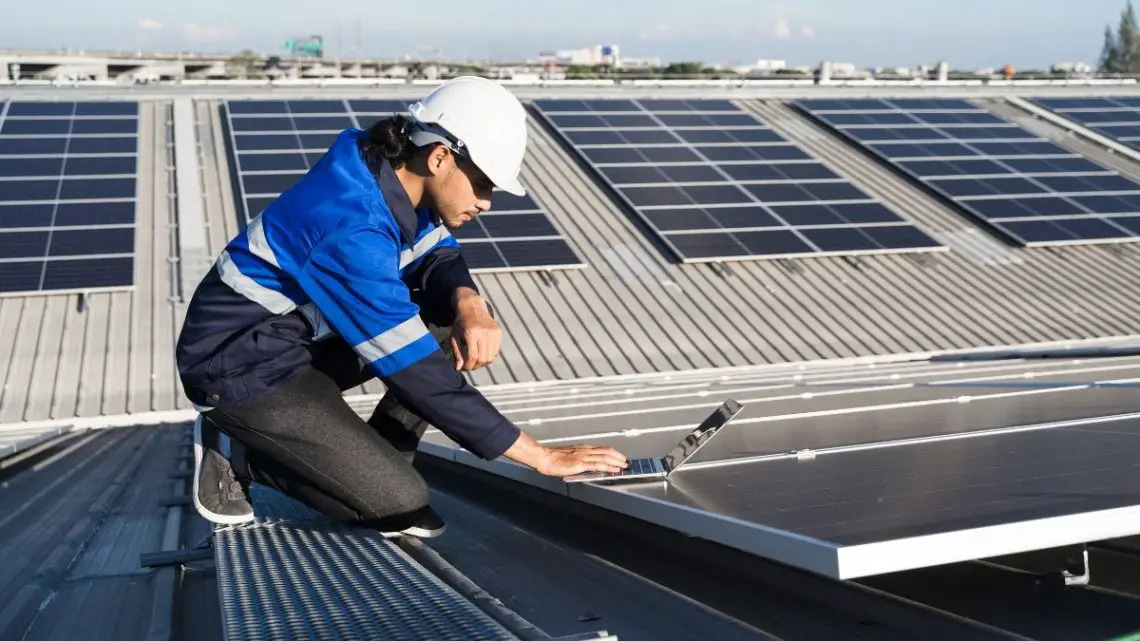
Simplified and Affordable Rooftop Green Hydrogen Fuel Production System Boosts Viability
July 13, 2023The technology is comprised of 3D printed plastic coated with aluminum and don’t require sun tracking.
Using solar panels to produce renewable energy to power green hydrogen fuel generation isn’t anything new, but a new technology is giving this concept the opportunity to become more affordable and available.
Researchers in Canada and Germany have taken a new angle using artificial photosynthesis.
While green hydrogen fuel using solar energy to power electrolysis is being developed in many projects, artificial photosynthesis is starting to be examined with greater interest due to the potential it holds for affordability and practicality. That technology can be used for splitting water into its oxygen and hydrogen molecules so that it can be used for fuel. It can also produce liquid H2 fuels using carbon dioxide and water.
The Canadian and German researchers have made substantial steps forward in this area and recently published their findings in the Joule journal. Their report detailed reactors no entirely unsimilar to solar panels that can produce H2 on rooftops.
The photoreactors have a relatively simple design and are inexpensive to make. Mass fabrication methods could easily be employed to make them using common plastics, according to the researchers in their paper. Moreover, unlike other artificial photosynthesis systems already known, this particular design offers greater efficiency without the requirement of solar tracking.
As a result, the green hydrogen fuel production system is simpler to operate and maintain.
Furthermore, the system can be small enough that it can be installed on rooftops. The affordability and practicality can help to make green H2 more viable, as the majority of H2 is currently produced using natural gas (gray H2), which results in carbon dioxide emissions.

Using artificial photosynthesis to produce hydrogen fuel, means that the energy is produced sustainably and can be used to power cars and trucks while also being usable for home heating. This method uses catalysts for sunlight absorption which will then trigger the water splitting reaction.
So far, this type of photoreactor has been used exclusively on very small scales. That said, these lab setups and rooftop demonstrations have been highly promising.
Researchers are seeking new ways to use solar power for larger scale hydrogen fuel production.
Larger systems often depend on technology using massive mirrors and parabolic dishes to concentrate the sun’s energy. Alternately, they rely on sun tracking throughout the day. The issue with those technologies is that they add cost and complexity to the method.
“In the ideal case, the photoreactor should guide the incident sunlight to the photocatalyst with hardly any losses, no matter where it comes from or where the sun is currently positioned,” said research lead Paul Kant from the Karlsruhe Institute of Technology in Germany’s Institute for Micro Process Engineering.
Kant and the research team developed and built a photoreactor with computer-aided design using optical modeling. The reactor is made of hundreds of V-shaped reaction channels positioned parallel to each other. Each one has a tube-shaped cavity at its base. Within the channels and tubes, the inner surfaces have a coating of mirrored reflective material. This allows the V shape to capture light from various directions, directing it into the tube-like cavity, which contains the photocatalyst and water.
Using 3D-printed material
 The channel arrays in this hydrogen fuel production design can be 3D printed using commodity plastic materials. For reflectivity, they can then be coated with a thin layer of aluminum. Including the catalyst, which would cost about $1 million per ton, the researchers estimate that the cost of the materials to create the photoreactor system would be about $22 per square meter (about $6.70 per square foot).
The channel arrays in this hydrogen fuel production design can be 3D printed using commodity plastic materials. For reflectivity, they can then be coated with a thin layer of aluminum. Including the catalyst, which would cost about $1 million per ton, the researchers estimate that the cost of the materials to create the photoreactor system would be about $22 per square meter (about $6.70 per square foot).
The green hydrogen fuel production system currently demonstrates an efficiency rate of about 5.8 percent, which is high for technology using the materials chosen by the researchers. The team is now working on improving photocatalysts and optimizing the reactor they developed, in order to achieve improved efficiency. They are also examining the real-world aging of the plastics and optical coatings and taking on challenges such as the accumulation of dust in the channels.
“Low-cost and high-efficiency photoreactors are the essential keys to the success of solar-driven photosynthesis,” said the researchers in their green hydrogen fuel technology paper. They explained that to do that, “the introduced photoreactor design and approach is a significant step.”
Hydrogen FAQ’s About Solar Energy Research
- What is the new technology being developed by researchers in Canada and Germany?
- The new technology being developed by researchers in Canada and Germany uses artificial photosynthesis to produce green hydrogen fuel. This involves splitting water into its oxygen and hydrogen molecules using catalysts that absorb sunlight.
- How does this new technology differ from traditional solar panels?
- Unlike traditional solar panels, these photoreactors do not require solar tracking and are made using common plastics, which makes them more affordable and practical. They can be installed on rooftops and can operate efficiently without the need for direct sunlight.
- How does the photoreactor work?
- The photoreactor works by using hundreds of V-shaped reaction channels coated with a reflective material. This design allows the reactor to capture light from various directions, directing it into a tube-like cavity that contains the photocatalyst and water. The light then triggers a reaction that splits the water into oxygen and hydrogen molecules.
- What are the benefits of using 3D-printed materials in this technology?
- Using 3D-printed materials makes the photoreactors inexpensive to produce and easily scalable. The channel arrays can be printed using commodity plastic materials and coated with a thin layer of aluminum for reflectivity. This reduces the overall cost of the system, making it more accessible for widespread use.
- What is the current efficiency rate of the green hydrogen fuel production system?
- The current efficiency rate of the green hydrogen fuel production system is about 5.8 percent. However, the researchers are working on improving the photocatalysts and optimizing the reactor design to achieve better efficiency.
- What are some of the challenges faced in developing this technology?
- Some of the challenges in developing this technology include the real-world aging of the plastics and optical coatings used in the photoreactors, as well as issues such as the accumulation of dust in the channels.
- How does this technology contribute to sustainable energy production?
- This technology contributes to sustainable energy production by providing a way to produce green hydrogen fuel using sunlight and water. This method of fuel production does not result in carbon dioxide emissions, unlike current methods that rely on natural gas.
Ready to test your knowledge on the most abundant element in the universe? Take our fun and engaging Hydrogen Quiz now! [forminator_quiz id=”58712″]




 With over 15 years of reporting hydrogen news, we are your premier source for the latest updates and insights in hydrogen and renewable energy.
With over 15 years of reporting hydrogen news, we are your premier source for the latest updates and insights in hydrogen and renewable energy.